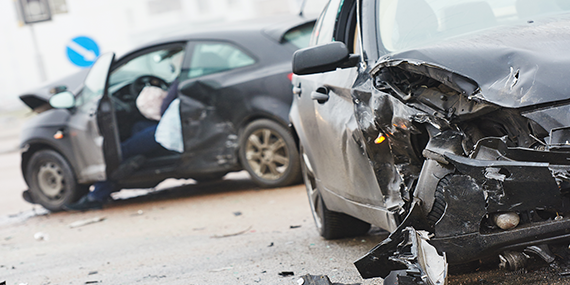Finding Fault Through Accident Reconstruction
January 28, 2016

Accidents happen, but the cause isn’t always known. Accident reconstruction helps to identify who is at fault, saving others involved in the accident time and money.
An Accident at Sagamore Bridge
Thanks to accident reconstruction, Massachusetts State Police were able to rule out the initial cause of a car crash at the foot of the Sagamore Bridge in North Sagamore, Mass. in 2004.
According to The Cape Cod Times, initial investigations showed a pickup truck was merging onto Route 6 when it hit a black GMC truck driven by Michael Furlong. Furlong’s vehicle was subsequently pushed across the median into oncoming traffic, where it collided with a van driven by Amnon Bogomolsky. Furlong was thrown from the truck and taken to a hospital for treatment. He died July 11. Bogomolsky died at the scene and five of his passengers were taken to hospitals for treatment. Police officials had since been looking for the driver of the merging pickup that spurred the crash.
However, new witness testimony paired with crash reconstruction suggests the cause of the accident is not what officials initially thought.
“That examination conducted by the State Police accident reconstruction team revealed no evidence of a rear side impact, which would have caused [Furlong’s] vehicle to be pushed into the oncoming lane,” District Attorney Michael O’Keefe said in a statement.
Although law enforcement officials have not released any other information about what may have really happened, they are now focusing their efforts in the right direction.
The How & Why of Accidents
An accident reconstruction resolves the questions of how and why an accident occurred. This service is performed by an expert who is trained in the field of traffic accident reconstruction, engineering and physics.
Reconstructing accidents requires data such as:
- vehicle final resting positions
- accident scene evidence
- vehicle damage
By working with this data in reverse, beginning with the known evidence of final resting positions, along with information relevant to the collision, the re-constructionist can resolve issues such as speeds, collision severity, visibility, driver behavior and other causal factors. An accident reconstruction is the culmination of the scientific analysis of the data gathering process formulated into a concise and coherent report, which is backed by expert testimony.
These professionals come from a variety of backgrounds, including science education, engineering, or law enforcement that have special training. These experts can evaluate the scene of the accident, develop calculations and assessments regarding how the accident occurred or how damages were sustained, and can testify to these facts and findings before a judge or jury. They do so by offering a variety of services, including site visits to the scene of the accident, reviewing photos, interviewing witnesses, applying the applicable scientific principles and preparing a final report. That report often forms the basis for the expert’s testimony in court. Generally, the importance of the accident reconstructionist’s testimony is directly tied to the complexity or controversial nature of the accident in question.
Expert testimony regarding how an accident occurred is central to settlement negotiations. Using illustrations, simulations, models, animations and other methods, accident reconstructionists can show exactly what happened, how it happened, and how it could have been prevented. Even if there are photographs of crash scenes and medical records, these can usually demonstrate the severity of the accident or damages sustained rather than proving who was at fault.
An Accident Investigation typically addresses the following issues:
- What was the speed of the vehicle(s) involved?
- Where did impact occur, and at what angles?
- What were the weather conditions, human factors or roadway design issues, and what role, if any, did they play in the accident?
- What were the visibility and the potential for avoidance of one or more of the parties?
- Are the injuries claimed consistent with the magnitude of impact and the occupant dynamics?
- Who was the driver of the vehicle, and were the occupants wearing their seatbelts?
The focus of accident reconstruction is to provide detailed analysis and conclusions in terms that everyone can understand. The key is to communicate often very complex and complicated scientific concepts in a way that is easily grasped to determine the true cause(s) of an accident.

